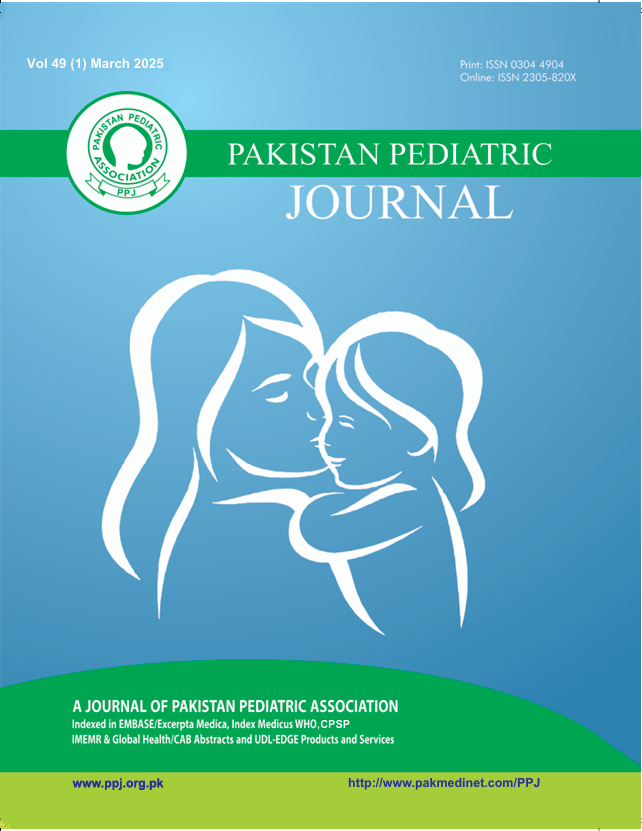Malnutrition and its determinants among 6 to 59 months of children visiting Pediatrics Outpatient Department of a Private Teriary Care Hospital, Lahore
Keywords:
malnutrition, wasting, stunting, underweight, 6-59 monthsAbstract
Background:
Malnutrition remains the most significant health issue and main reason of sickness and deaths among children under 5. This study was conducted to determine the frequency of undernutrition among ambulatory children 6-59 months old visiting Pediatrics Outpatient Department of a private hospital and to assess the association of under-nutrition with socio-demographic and feeding practices.
Methods:
A cross-sectional study was carried out in Pediatrics Outpatient Department of a private tertiary care hospital Lahore after approval from Institutional Review Board. A sample of 245 children of required age group was selected using nonprobability purposive sampling technique. The data was recorded from their mothers after taking written consent from them on a pretested structured questionnaire and weight and height of children were measured. Data analysis was done on SPSS Version 21.0. A Chi-square/Fisher test was applied to find out the determinants of malnutrition and p-value of ≤0.05 was taken as significant.
Results:
The frequency of stunting, underweight and wasting among children was 31.43%, 19.2% and 24.90% respectively. Underweight among children is associated statistically with low birth weight, family size and parental decision making for health seeking (p- values=0.031, 0.045 and 0.05) respectively. Whereas there is statistically significant association of stunting with education of the mother (p-value=0.038) and wasting had shown significant relationship with age and exclusive breast feeding (p-value=0.05 and0.042) respectively.
Conclusion:
There is high frequency of undernutrition among children between 6−59 months and there is significant association of undernutrition with birthweight, family size, education of mother, age of child and breast feeding.


